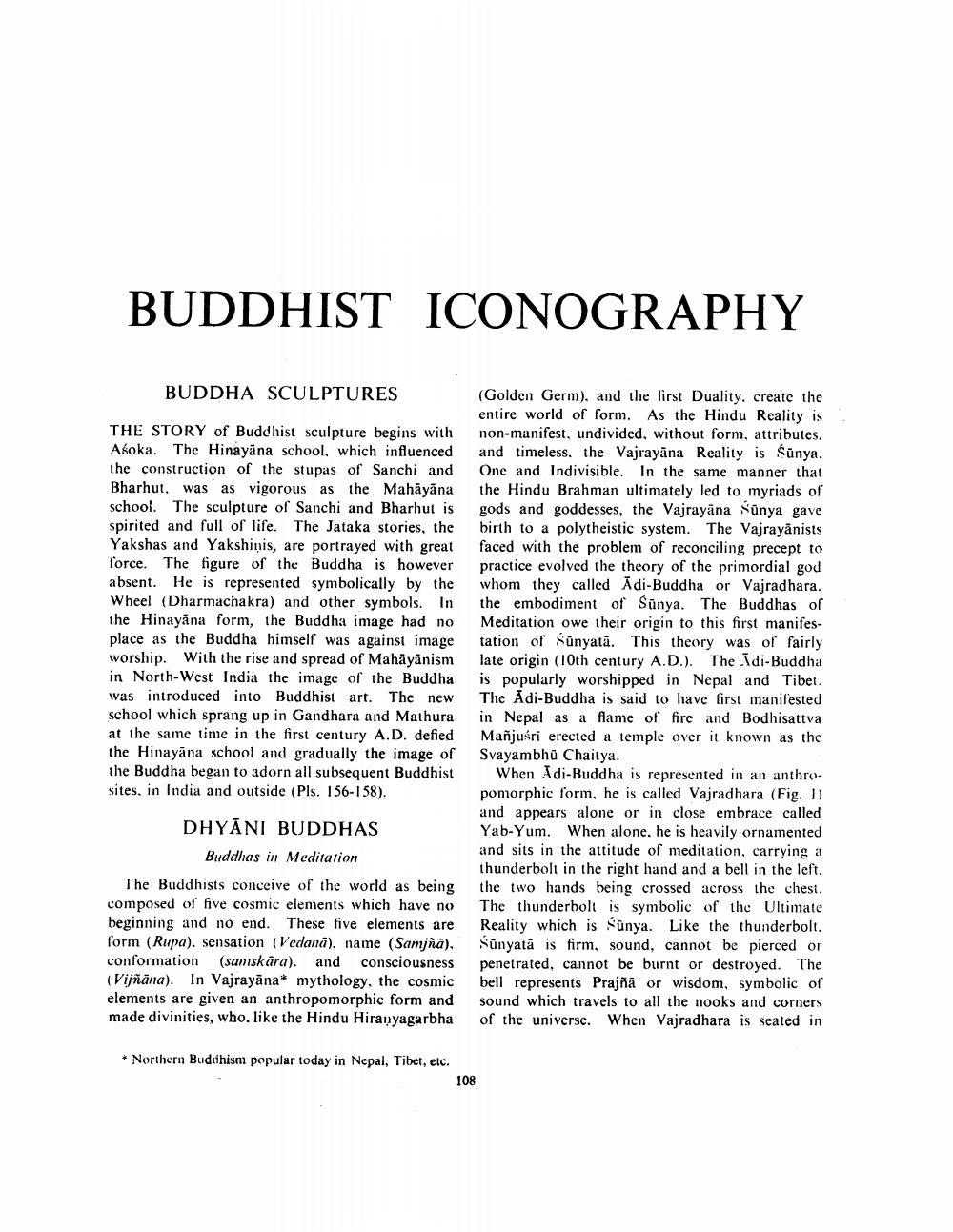________________
BUDDHIST ICONOGRAPHY
(Golden Germ), and the first Duality. create the entire world of form. As the Hindu Reality is non-manifest, undivided, without form, attributes. and timeless. the Vajrayana Reality is Sunya. One and Indivisible. In the same manner that the Hindu Brahman ultimately led to myriads of gods and goddesses, the Vajrayana Sünya gave birth to a polytheistic system. The Vajrayānists faced with the problem of reconciling precept to practice evolved the theory of the primordial god whom they called Adi-Buddha or Vajradhara. the embodiment of Sunya. The Buddhas of Meditation owe their origin to this first manifestation of Sunyata. This theory was of fairly late origin (10th century A.D.). The Adi-Buddha is popularly worshipped in Nepal and Tibet. The Adi-Buddha is said to have first manifested in Nepal as a flame of fire and Bodhisattva Mañjuśri erected a temple over it known as the Svayambhu Chaitya.
When Adi-Buddha is represented in an anthropomorphic form, he is called Vajradhara (Fig. 1) and appears alone or in close embrace called Yab-Yum. When alone, he is heavily ornamented and sits in the attitude of meditation, carrying a thunderbolt in the right hand and a bell in the left. the two hands being crossed across the chest. The thunderbolt is symbolic of the Ultimate Reality which is Sunya. Like the thunderbolt. Sūnyata is firm, sound, cannot be pierced or penetrated, cannot be burnt or destroyed. The bell represents Prajñā or wisdom, symbolic of sound which travels to all the nooks and corners of the universe. When Vajradhara is seated in
BUDDHA SCULPTURES
THE STORY of Buddhist sculpture begins with Aśoka. The Hinayana school, which influenced the construction of the stupas of Sanchi and Bharhut, was as vigorous as the Mahāyāna school. The sculpture of Sanchi and Bharhut is spirited and full of life. The Jataka stories, the Yakshas and Yakshinis, are portrayed with great force. The figure of the Buddha is however absent. He is represented symbolically by the Wheel (Dharmachakra) and other symbols. In the Hinayana form, the Buddha image had no place as the Buddha himself was against image worship. With the rise and spread of Mahāyānism in North-West India the image of the Buddha was introduced into Buddhist art. The new school which sprang up in Gandhara and Mathura at the same time in the first century A.D. defied the Hinayana school and gradually the image of the Buddha began to adorn all subsequent Buddhist sites, in India and outside (Pls. 156-158).
DHYANI BUDDHAS
Buddhas in Meditation
The Buddhists conceive of the world as being composed of five cosmic elements which have no beginning and no end. These five elements are form (Rupa). sensation (Vedana), name (Samjñā). conformation (samskara). and consciousness (Vijñāna). In Vajrayana mythology, the cosmic elements are given an anthropomorphic form and made divinities, who. like the Hindu Hiranyagarbha
* Northern Buddhism popular today in Nepal, Tibet, etc.
108




